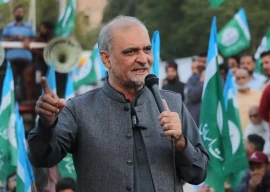
Pakistan and India are among the developing countries where thalassemia patients are multiplying at a faster rate.
The carriers, or thalassemia minors, generally do not have any symptoms but have the potential to transmit the disease to their offspring.
When two minors cross, there is a 25% chance that the child will be normal, 25% chance that he/she will be thalassamia major and a 50% chance that he/she will be a thalassemia carrier. Therefore, a large proportion of thalassemia patients are often children.
Children born with thalassemia major may experience severe anemia during the first year of life.
While speaking at the seminar, Sindh Blood Transfusion Authority (SBTA) secretary Dr Zahid Ansari said that SBTA and the government had constructed seven thalassemia centres in Sindh, including two in Karachi. These centers, he said, would become operational from this August.
Prof Jamal Raza, director of the National Institute of Child Health (NICH), Dr Tahir Shamsi, a hematologist, and Dr Qiratul Ain, Dr Adil Akhtar, Dr Nadeem Samad and others spoke during two parallel sessions.
Sindh Information Minister Shazia Marri, who was the chief guest at the event, urged the media to create awareness about the blood disorder. She added that people living in rural areas need to be informed about the method of transmission of the disease, as marriages between cousins are common there.
Justice (retd) Saeeduzzaman Siddiqui suggested the passage of legislation that would prevent people carrying thalassemia genes from marrying each other.
Pakistan Islamic Medical Association president Dr Misbahul Aziz and Paediatric Association of Pakistan president Dr Amir Jogezai also spoke on the occasion.
Published in The Express Tribune, May 3rd, 2012.
1732503274-0/Untitled-design-(43)1732503274-0-405x300.webp)
1732501636-0/Untitled-design-(42)1732501636-0-165x106.webp)

1732498967-0/Outer-Banks--(1)1732498967-0-165x106.webp)
1732086766-0/BeFunky-collage-(74)1732086766-0-165x106.webp)












COMMENTS
Comments are moderated and generally will be posted if they are on-topic and not abusive.
For more information, please see our Comments FAQ